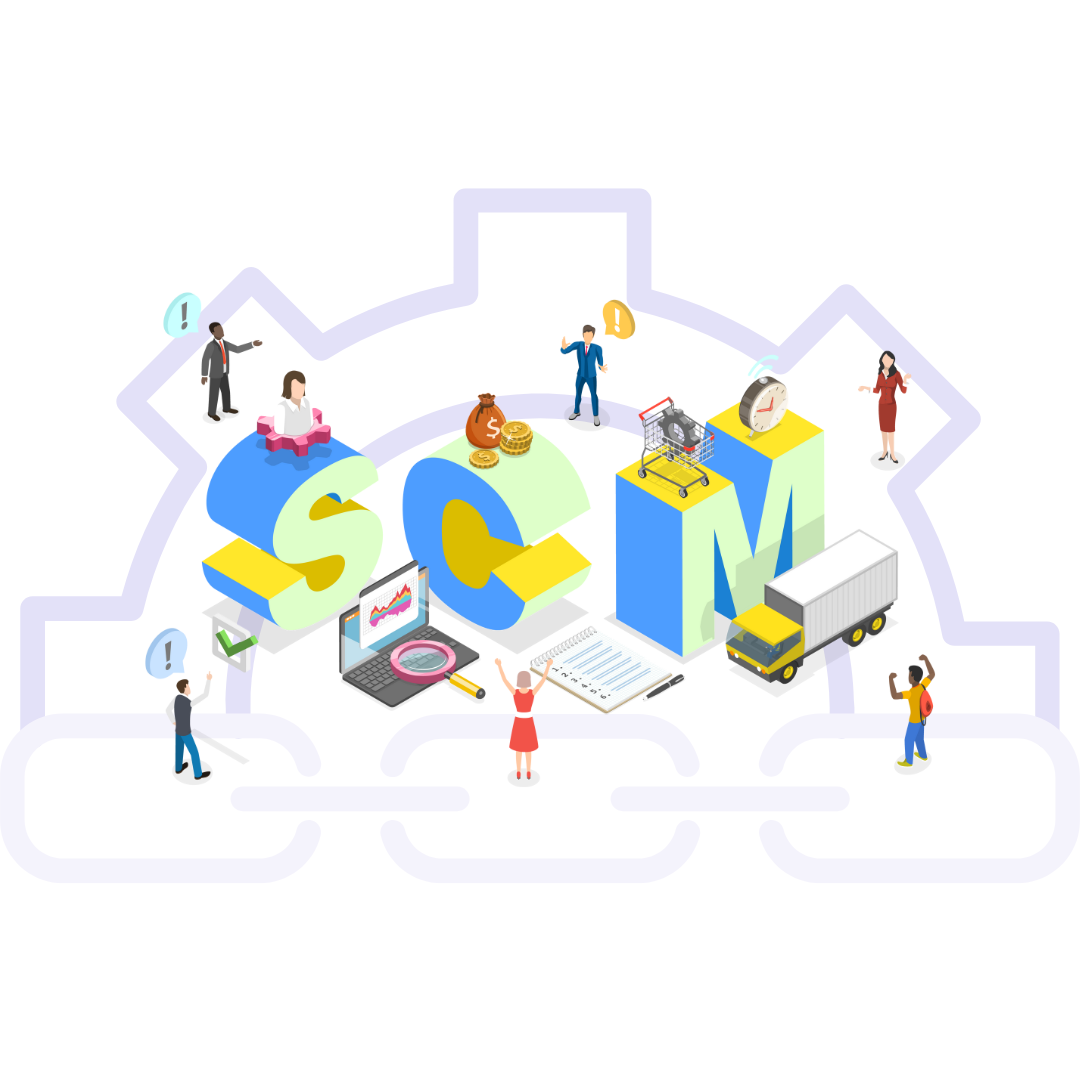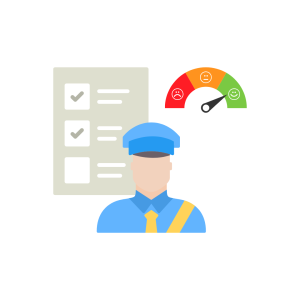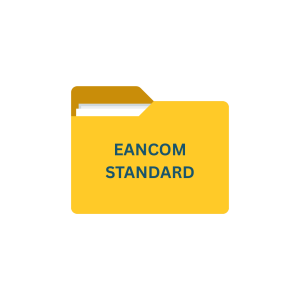Introduction
The complexity of managing multiple trading partners, suppliers, and logistics networks can create inefficiencies that hinder supply chain performance. This is where Business-to-Business (B2B) integration becomes a game-changer. By seamlessly connecting the systems and processes of trading partners, B2B integration enables faster, more accurate, and more efficient supply chain operations.
B2B Integration catalyzes enhanced efficiency, improved communication, and streamlined processes across the entire supply chain ecosystem. From reducing operational costs to fostering stronger partner relationships, B2B integration stands at the forefront of supply chain innovation, promising a future where businesses can adapt swiftly to market demands and outpace competition.
Key Takeaway
- B2B integration is transforming supply chains by automating processes and unifying systems across organizations. By leveraging EDI, APIs, and cloud platforms, businesses can achieve seamless data exchange, boosting efficiency and visibility.
- The core benefits of B2B integration include enhanced operational efficiency, improved supply chain visibility, and significant cost reduction. These advantages lead to faster time-to-market and stronger partner relationships, crucial in today’s competitive landscape.
- Effective B2B integration relies on robust data exchange standards, secure platforms, and efficient partner management. Tracking key performance indicators such as order processing efficiency and inventory management is essential for optimizing supply chain performance.
- While implementation challenges exist, including legacy system compatibility and initial costs, they can be overcome with cloud-based solutions and comprehensive support. Continuous monitoring and optimization of KPIs are crucial for long-term success in evolving markets.
- B2B integration is no longer just an option but a necessity for businesses aiming to future-proof their supply chains. By embracing this technology, companies position themselves for enhanced efficiency, agility, and competitiveness in the dynamic global marketplace.
What is B2B Integration?
B2B integration refers to automating and unifying business processes between two or more organizations using technology. It connects disparate systems, enabling the seamless exchange of critical business data such as purchase orders, invoices, shipping notices, and inventory updates.
By eliminating manual processes and streamlining communication, B2B integration ensures smoother interactions across the supply chain.
Key technologies facilitating B2B integration include:
- Electronic Data Interchange (EDI): Standardized electronic transmission of business documents.
- Application Programming Interfaces (APIs): Interfaces enabling real-time communication between systems.
- Value-Added Networks (VANs): Secure networks facilitating data exchange.
- Cloud-based Platforms: Centralized hubs for integrating and managing partner communications.
Understanding the Benefits of B2B Integration in Supply Chain Management
B2B integration, at its core, represents the seamless exchange of business documents and data between trading partners. In supply chain management, it serves as the digital backbone that connects various stakeholders, enabling real-time communication and collaboration. This integration goes beyond simple data transfer; it encompasses the automation of complex business processes, from order placement to inventory management and logistics coordination.
The evolution of B2B integration has been remarkable. What started as basic Electronic Data Interchange (EDI) has now transformed into sophisticated platforms that leverage cloud computing, artificial intelligence, and machine learning. These advanced systems can process vast amounts of data, predict trends, and even make autonomous decisions, significantly enhancing supply chain agility and responsiveness.
One of the key aspects of modern B2B integration is its ability to standardize data formats and communication protocols across diverse systems. This standardization eliminates the need for manual data entry, reduces errors, and ensures that all parties in the supply chain speak the same ‘digital language’. For instance, when a retailer places an order, the integrated system can automatically update inventory levels, trigger production schedules, and initiate shipping processes across multiple partners – all in real time.
Moreover, B2B integration extends beyond traditional boundaries, incorporating emerging technologies like blockchain for enhanced security and traceability. This level of integration provides unprecedented visibility into the supply chain, allowing businesses to track products from source to destination, manage risks more effectively, and make data-driven decisions.
The impact of B2B integration on supply chain performance is multifaceted:
- Enhanced Operational Efficiency: By automating routine tasks and streamlining processes, B2B integration significantly reduces manual errors and processing times.
- Improved Visibility: Real-time data sharing provides a comprehensive view of the entire supply chain, enabling better forecasting and decision-making.
- Cost Reduction: Automation and improved accuracy lead to lower operational costs, reduced inventory holding, and optimized resource allocation.
- Faster Time-to-Market: Streamlined processes and better coordination result in quicker product development and delivery cycles.
- Enhanced Partner Relationships: Improved communication and collaboration foster stronger, more reliable partnerships across the supply chain.
- Enhanced Data Accuracy: Manual data entry often leads to errors, which can disrupt the supply chain. B2B integration automates the data exchange process, significantly reducing inaccuracies in purchase orders, shipping notices, and inventory updates.
- Scalability and Flexibility: As businesses grow and supply chains expand, integrating with new partners and systems can become challenging. B2B integration platforms provide scalable solutions that can accommodate increasing volumes of data and transactions without compromising performance.
- Improved Compliance and Standardization: Regulatory compliance is critical in many industries, such as healthcare, retail, and automotive. B2B integration ensures adherence to standards like EDI X12 or EDIFACT, helping businesses meet regulatory requirements effortlessly.
Key Components of Effective B2B Integration
Implementing a successful B2B integration strategy requires a comprehensive understanding of its key components. These elements work in concert to create a robust, efficient, and scalable integration framework that can significantly enhance supply chain performance. Let’s explore the essential components that form the backbone of effective B2B integration:
1. Data Exchange Standards and Protocols
At the heart of B2B integration lies the ability to exchange data seamlessly between different systems and organizations. This requires the use of standardized data formats and communication protocols. Some key standards include:
- EDI (Electronic Data Interchange): A long-standing standard for business document exchange.
- XML (eXtensible Markup Language): A flexible format for structuring data.
- API (Application Programming Interface): Enables real-time data exchange between applications.
- AS2 (Applicability Statement 2): A protocol for secure data transmission over the Internet.
Adopting these standards ensures that all parties in the supply chain can communicate effectively, regardless of their internal systems.
2. Integration Platform
A robust hybrid integration platform serves as the central hub for managing all B2B communications. This platform should offer:
- Connectivity: The ability to connect with various systems, both internal and external.
- Data Transformation: Tools to convert data between different formats.
- Routing: Intelligent routing of messages to the appropriate recipients.
- Monitoring and Reporting: Real-time visibility into transaction flows and performance metrics.
Modern integration platforms often leverage cloud technology, offering scalability and accessibility from anywhere.
3. Security and Compliance Measures
Given the sensitive nature of business data, security is paramount in B2B integration. Key security components include:
- Encryption: To protect data during transmission and storage.
- Authentication: Ensuring that only authorized parties can access the system.
- Digital Signatures: To verify the integrity and origin of messages.
- Compliance Tools: Features to ensure adherence to industry regulations like GDPR.
4. Partner Onboarding and Management
Efficient partner onboarding is crucial for smooth B2B integration. This component should include:
- Self-Service Portals: Allowing partners to set up their profiles and preferences.
- Testing Tools: To validate connections and data exchanges before going live.
- Partner Performance Monitoring: Tracking the efficiency and reliability of partner interactions.
5. Process Automation
Automation is a key benefit of B2B integration. This component involves:
- Workflow Engines: To automate complex business processes across the supply chain.
- Business Rules Management: Allowing for the definition and execution of business logic without coding.
- Exception Handling: Automated processes for dealing with errors or anomalies.
6. Analytics and Reporting
Data-driven decision-making is enhanced through supply chain analytics:
- Real-Time Dashboards: Providing instant visibility into key performance indicators.
- Predictive Analytics: Leveraging historical data to forecast future trends.
- Custom Reporting Tools: Allowing users to create tailored reports for specific needs.
7. Scalability and Flexibility
As businesses grow and evolve, their B2B integration solution must adapt. This requires:
- Cloud-Based Architecture: Offering scalability and flexibility to handle growing transaction volumes.
- Modular Design: Allowing for easy addition or modification of features.
- Support for Multiple Protocols: To accommodate various partner requirements and future technologies.
8. Support and Maintenance
Ongoing support is crucial for maintaining smooth operations:
- 24/7 Technical Support: To address issues promptly.
- Regular Updates and Patches: Ensuring the system remains secure and up-to-date.
- Training and Documentation: To help users maximize the system’s potential.
9. Integration with Internal Systems
Seamless connection with internal systems is vital:
- ERP Integration: Linking B2B processes with enterprise resource planning systems.
- CRM Integration: Connecting customer relationship management data for a complete view of customer interactions.
- WMS Integration: Integrating with warehouse management systems for real-time inventory control.
10. Mobile Accessibility
In today’s mobile-first world, access to B2B integration tools via mobile devices is increasingly important:
- Mobile Apps: For on-the-go access to key functions and data.
- Responsive Design: Ensuring that web interfaces are usable on various devices.
By ensuring these key components are in place, organizations can create a comprehensive B2B integration framework that not only meets current needs but is also prepared for future challenges and opportunities in supply chain management. This robust foundation enables businesses to achieve higher levels of efficiency, collaboration, and innovation in their supply chain operations.
Important KPIs to Track Supply Chain Performance
To truly understand and quantify the impact of B2B integration on supply chain performance, it’s essential to establish and monitor key performance indicators (KPIs). These metrics provide tangible evidence of improvement and help identify areas for further optimization. Here are crucial KPIs to consider when evaluating the success of your B2B integration efforts:
1. Order Processing Efficiency
- Order Cycle Time: Measure the time from order placement to fulfillment.
- Order Accuracy Rate: Track the percentage of orders processed without errors.
- Order Fill Rate: Monitor the proportion of orders filled on the first shipment.
These metrics directly reflect the efficiency gains from automated order processing and improved data accuracy.
2. Inventory Management
- Inventory Turnover Ratio: Calculate how many times inventory is sold and replaced over a period.
- Stock-out Frequency: Track the number of times items are unavailable when ordered.
- Carrying Cost of Inventory: Measure the total cost of holding inventory over time.
Effective B2B integration should lead to more accurate inventory forecasting and reduced carrying costs.
3. Financial Performance
- Days Sales Outstanding (DSO): Monitor the average number of days it takes to collect payment after a sale.
- Cash-to-Cash Cycle Time: Measure the time it takes for cash invested in supplies to be converted back into cash from sales.
- Cost Savings: Track reductions in operational costs attributed to B2B integration.
Improved financial metrics indicate more efficient cash flow management and cost reductions.
4. Partner Collaboration
- Partner Onboarding Time: Measure how long it takes to fully integrate a new trading partner.
- Partner Satisfaction Scores: Conduct regular surveys to gauge partner satisfaction with the integration process.
- Number of Active Partners: Track the growth in the number of actively integrated partners.
These metrics reflect the ease and effectiveness of partner collaboration through B2B integration.
5. Data Quality and Accuracy
- Data Error Rate: Monitor the percentage of transactions containing errors or inconsistencies.
- Data Processing Time: Measure the time taken to process and validate incoming data.
- Data Completeness: Track the percentage of required fields accurately filled in transactions.
Improved data quality is a key benefit of B2B integration and directly impacts overall supply chain efficiency.
6. Supply Chain Visibility
- Real-Time Inventory Visibility: Measure the percentage of inventory that can be tracked in real-time.
- Shipment Tracking Accuracy: Monitor the accuracy of shipment status and location information.
- Forecast Accuracy: Compare predicted vs. actual demand to assess the accuracy of forecasting models.
Enhanced visibility enables better decision-making and more responsive supply chain management.
7. Compliance and Risk Management
- Compliance Rate: Track adherence to industry regulations and standards.
- Security Incident Frequency: Monitor the number of security breaches or data loss incidents.
- Audit Trail Completeness: Ensure all transactions have a complete and accessible audit trail.
These metrics are crucial for assessing the risk mitigation benefits of B2B integration.
8. System Performance and Reliability
- System Uptime: Measure the percentage of time the B2B integration system is operational.
- Transaction Processing Speed: Track the average time taken to process different types of transactions.
- Error Resolution Time: Monitor how quickly errors or exceptions are identified and resolved.
Reliable system performance is essential for maintaining smooth supply chain operations.
9. Customer Satisfaction
- On-Time Delivery Rate: Measure the percentage of orders delivered within the promised timeframe.
- Perfect Order Percentage: Track orders delivered complete, on time, and without damage.
- Customer Satisfaction Scores: Conduct regular surveys to gauge customer satisfaction with order fulfillment.
Improved customer satisfaction is a key indicator of successful B2B integration impact on end-to-end supply chain performance.
10. Innovation and Adaptability
- New Process Implementation Time: Measure how quickly new business processes can be implemented through the B2B integration platform.
- API Utilization Rate: Track the usage and effectiveness of APIs in facilitating integration.
- Technology Adoption Rate: Monitor the speed at which new technologies or standards are incorporated into the B2B integration framework.
These metrics reflect the agility and future readiness of your B2B integration strategy.
Top 30 KPIs you should track to improve your supply chain efficiency.
Commport business analytics solutions can help you track these metrics continuously with real-time data insights and dashboards.
Download NowOvercoming Challenges in B2B Integration
While B2B integration offers immense benefits, businesses may face challenges such as:
- Legacy Systems: Older systems may lack compatibility with modern integration solutions.
- High Initial Costs: Setting up integration platforms can require significant investment.
- Complex Partner Ecosystems: Managing diverse trading partners with varying technical capabilities can be daunting.
Solutions
- Leveraging cloud-based solutions to reduce upfront costs.
- Partnering with experienced B2B integration providers for seamless implementation.
- Providing technical support and training for trading partners.
Conclusion
B2B integration is no longer a luxury; it is a necessity for businesses aiming to thrive in today’s fast-paced, interconnected world. By automating processes, enhancing data accuracy, and fostering collaboration, B2B integration transforms supply chain performance, unlocking new levels of efficiency and agility.
Businesses that embrace integration not only optimize their operations but also position themselves for long-term success in an ever-evolving marketplace.
For a seamless B2B integration experience, explore solutions like EDI, VAN, and cloud-based platforms offered by Commport Communications, trusted by thousands of businesses worldwide.
Commport B2B Solutions
Need Help? Download: EDI Buyers Guide
Unlock the full potential of your supply chain with our comprehensive EDI Buyer's Guide — your first step towards seamless, efficient, and error-free transactions
Frequently Asked Questions
EDI is a foundational technology for B2B integration. It standardizes the electronic exchange of business documents, such as purchase orders and invoices, between organizations. EDI ensures accuracy, reduces manual workload, and accelerates data exchange in supply chains
Key benefits include:
- Faster transaction processing
- Improved data accuracy
- Real-time visibility into supply chain operations
- Enhanced collaboration with trading partners
- Cost efficiency and reduced overhead
- Scalability to handle growing business needs
Traditional communication methods, like phone calls or emails, are manual, slow, and prone to errors. B2B integration automates these processes using technologies like EDI, APIs, and cloud platforms, ensuring faster, more accurate, and standardized data exchange between trading partners
B2B integration provides real-time updates on inventory levels across the supply chain. This enables businesses to avoid overstocking or understocking, optimize inventory turnover, and ensure timely replenishment, improving overall efficiency.
Absolutely. SMBs benefit significantly from B2B integration by automating manual processes, improving supplier relationships, and gaining access to real-time data insights. Cloud-based and scalable B2B solutions make it affordable and accessible for smaller businesses to adopt these technologies.





